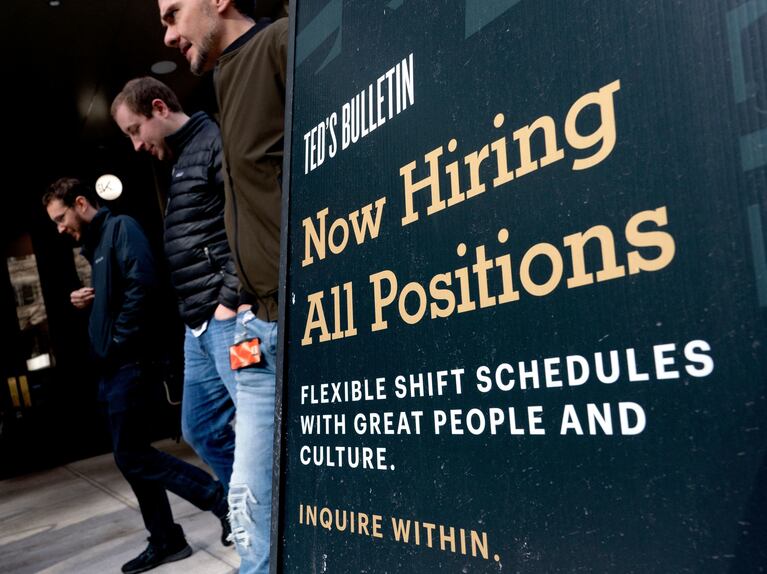The recent revisions to the U.S. jobs report by the Labor Department have sparked significant political discourse, further intensifying the already heated debate regarding the state of the U.S. economy. According to an update released on Wednesday, job growth in the United States last year may have been considerably weaker than initially reported. The Labor Department now estimates that employers added approximately 818,000 fewer jobs than previously thought over the 12 months leading up to March. This substantial revision, which is still preliminary, suggests that the total number of jobs created during this period is around 30% lower than previous estimates—a significant adjustment not seen since 2009.
In most years, such a revision might attract only limited attention, primarily from economic analysts and specialists. However, given that the U.S. is approaching a presidential election, this update has quickly become a focal point in political discussions. The implications of this revision are significant, particularly because strong job growth has been a cornerstone of the Biden administration’s narrative that its policies have facilitated a robust economic recovery following the pandemic.
Detailed Analysis of the Report
The new estimates propose a monthly job growth rate of about 174,000, a notable reduction from the approximately 240,000 previously reported. This downward revision has impacted various sectors, including information technology, media, retail, manufacturing, and the broad category of professional and business services. Consequently, the job growth during this period was even more heavily reliant on government and the education/healthcare sectors than previously understood. As Ryan Sweet from Oxford Economics pointed out, while hiring remained strong, it was not sufficient to keep pace with the growth of the working-age population. Despite the downward revision, the total number of jobs in the U.S. is still only about 0.5% lower than earlier estimates.
The Methodology Behind the Numbers
The Labor Department’s job creation estimates are based on monthly surveys conducted with employers across the country. These figures are routinely revised as more comprehensive data becomes available, with a final adjustment made at the beginning of each year. The report issued on Wednesday serves as a preliminary glimpse into that final update, incorporating data from county-level unemployment insurance tax filings. According to Ryan Sweet, this year’s revision is notably larger than those seen in previous years. However, some analysts have cautioned that this revision might be overstated, as the tax data used does not account for jobs held by unauthorized workers. With the recent surge in immigration in the U.S., this could mean that the actual job growth has been undercounted. Historically, the final job growth estimates have often been higher than the preliminary figures released in August.
Political and Economic Reactions
The Biden administration has consistently highlighted strong job growth as evidence that its economic policies have been successful in fostering a recovery from the pandemic, positioning the U.S. as having one of the strongest economies globally. However, the newly revised figures have provided Republicans with ammunition to criticize the administration’s handling of the economy. On social media, the Republican Party quickly responded to the revisions, accusing the Biden-Harris administration of misleading the public about job creation. Former President Donald Trump also weighed in, calling the revision a “MASSIVE SCANDAL!” and suggesting that the real numbers are even worse.
Despite the political uproar, Jared Bernstein, the chair of President Biden’s Council of Economic Advisers, emphasized that the revision does not undermine the overall strength of the jobs recovery, which has supported real wage gains, robust consumer spending, and record levels of small business creation.
Implications for the Future
For much of the past year, U.S. job growth has consistently exceeded expectations, defying the challenging economic environment marked by the highest borrowing costs in decades. These gains have been surprising to many economists, given that such conditions would typically slow down economic growth. The recent revisions, however, have added fuel to the argument that the labor market may be more fragile than previously believed. Some analysts suggest that the new data could strengthen the case for the Federal Reserve to lower interest rates in its upcoming meeting in November, a move that is already anticipated as the central bank seeks to prevent further weakening of the job market.
Despite these concerns, the financial markets have reacted relatively calmly to the latest data, with many noting that the revisions were largely in line with expectations. As Olivia Cross, an economist specializing in North America at Capital Economics, observed, while non-farm payroll growth from April 2023 to March 2024 appears to be softer than initially thought, the situation is not yet cause for significant alarm. In conclusion, while the Labor Department’s revisions have undoubtedly introduced new complexities into the political and economic landscape, they have also provided a more nuanced understanding of the U.S. job market’s performance over the past year. As the country moves closer to the presidential election, these findings are likely to remain a central issue in the ongoing debate over the state of the economy and the effectiveness of the current administration’s policies.




